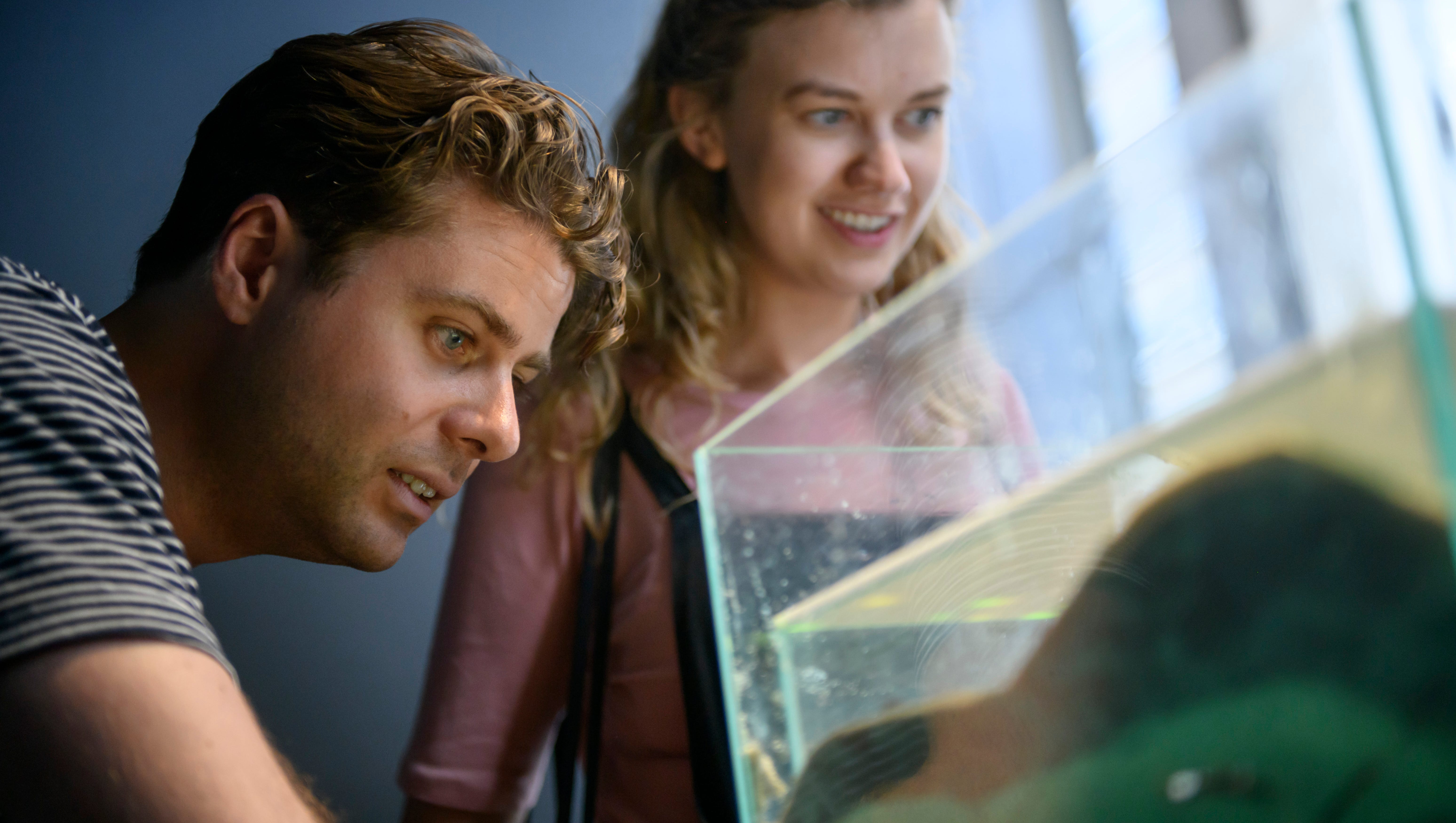Detroit gallery's exhibit aims to spark STEAM interest

An exhibit at a downtown Detroit gallery aims to fuse art and science to spark young people's interest in high-tech, creative careers.
The HUSTLE exhibit, which features interactive displays that combine technology and artwork, attracted visitors Thursday to Science Gallery Lab Detroit that included students from Wayne State University's K-12 summer engineering camps.
Yaw Wiafe-Akenten, the lead instructor for a WSU summer group of 13- to 17-year-olds, brought his students to the exhibit at 1001 Woodward, hoping to show them that engineering and art aren't mutually exclusive.

"We're bringing them to see the application of science and art," he said. "There's a social stigma that divides artists and engineers. But as an engineer, I see no problem with art. We need artists to design products. I want to delete that stigma in the students' minds. Art and coding: you can do both."
One of the gallery's pieces, "SurveillAnts," tracks the movement and interactions of ants.
Displaying the insects' trails on a screen, it highlights the ways modern consumers can be tracked by governments or corporations. The ants also represent one of the main concepts behind HUSTLE: they are constantly working to achieve their tasks.
HUSTLE was created with 15- to 25-year-old visitors in mind, according to Jeffrey Grabill, associate provost of teaching, learning, and technology at Michigan State University, a partner in the science gallery.
Grabill believes today's museums often neglect this demographic, but it's important for them to have an interest in the sciences and the humanities, he said.
"We want to light a fire," he said. "We want (young people) to engage the world. We want them to solve the world's hardest problems. Those problems require a mix of arts and sciences. We're deliberately fusing them."

Young people also have a major role in running the exhibition. Exhibit guides, called mediators, speak with visitors about the pieces. Their goal is to generate ideas and conversations about topics including health and technological surveillance.
"The conversations are the best part of the experience,” said Natasha Miller, community engagement manager for SGL Detroit. “This room is full of exhibits, but more importantly, it’s full of ideas."
HUSTLE, which runs through Aug. 25, is free and open to the public.
"It’s not a traditional art gallery; it’s not a traditional science museum," said Mark Sullivan, assistant director of SGLD. "It’s not something you can just look at. You have to get into the spirit of it. You have to do it."
Nina Bennetsen, 28, and Johan Jensen, 29, are PhD students and researchers from Denmark who heard about HUSTLE while walking downtown. They said the pieces on display show students science can be fun for them and that it can accomplish amazing things.
"The way you present research is in academic journals and papers, so it's not usually brought to a broader audience," Bennetsen said.
Bennetsen and Jensen were both intrigued that some of the pieces critiqued society and the problems modern communities face.
"(The exhibition) speaks to curiosity, even with children," Jensen said. "It could awake interest in society's problems."
nryan@detroitnews.com